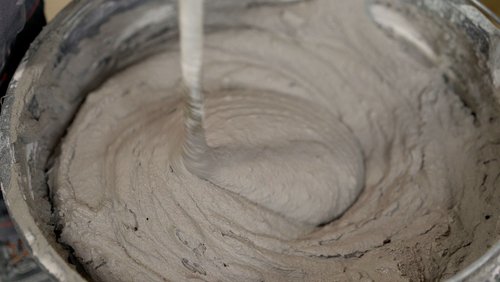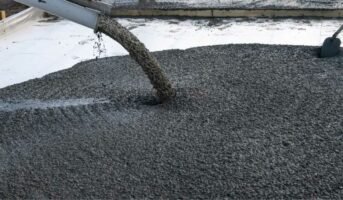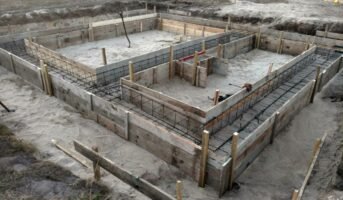Carpenters, building contractors and construction management staff frequently use calculators to estimate and compute numerous construction-related factors. Construction sites require a variety of instruments, including concrete calculators.
A concrete calculator acts similar to other types of calculators. It gives results based on the specified input. The accuracy and relevancy of the information are the only real restrictions. In contrast to other sorts, a concrete calculator offers calculated answers tailored to the building and construction sector through specific functionalities.
While most calculators can perform the basic calculation for the area, volume, arc, perimeter, and so forth, a concrete calculator can perform scientific or graphing calculations. They are designed specifically for the construction industry. On building calculators, weight, angles, running linear footage, and other measurements are frequently easier to enter in different units and calculate.
See also: Cement calculator: How to calculate the right amount of cement every time?
Types of calculators used at construction sites
| Types | Purpose |
| Concrete calculator | To measure the volume and requirements of the construction materials. |
| Cost calculator | To calculate the estimated construction cost |
| Mulch calculator | To calculate the landscaping mulch |
| Equipment calculator | To calculate the fuel and maintenance cost of heavy equipment. |
See also: Concrete Calculator – Significance and Uses
Concrete calculator: Description of concrete
Concrete comprises several coarse aggregates, or particles like sand, gravel, crushed stone, and slag, joined together by cement. By sticking to materials like aggregate and gradually hardening, cement is a substance used to bond them together. However, there are many different kinds of cement, including Portland cement.
You can order concrete in various forms, such as 60- or 80-pound bags, or delivered in huge quantities by concrete mixer trucks. Proper mixing can only produce firm and homogenous concrete. It combines water, cement, aggregate, and other needed ingredients. Concrete usually needs four weeks to attain over 90% of its ultimate strength, and it can keep getting stronger for another three years.

Source: Pinterest
know about: calculate estimate
Concrete calculator: Types of concrete material
More significant projects like driveways are simpler to finish when obtaining concrete by the yard rather than attempting to mix bag after bag by hand. Instead, you should determine the amount of concrete bags needed for smaller projects like a sidewalk, modest patio, or footings. There are two types of concrete material sold in the market.
Bagged concrete
If you buy bagged concrete, you can get it delivered, but if you only need a few bags, you’ll have to move it yourself. Extra tools are also required for concrete mixing. A wheelbarrow is helpful for bags, but a rental mixer is handy.
Concrete in bags is perfect for
- Pouring tiny slabs for patios or sidewalks
- Pouring little ramps, steps, or curbs
- Footings for walls, pergolas, and other structures
- Putting up fences or mailbox posts
- Making foundation walls, walkways, or step repairs.
Ready-mixed concrete
If you order concrete from a ready-mix supplier, they will need to know the total yards required to deliver. Many ready-mix concrete businesses have a one-yard minimum order requirement and impose shortage penalties for orders of incomplete batches.
Uses for ready-mixed concrete sold by the yard include:
- For a house, the foundation slabs
- Parking lots or sidewalks used by businesses
- Driveways
- Expansive patios
- Pool decks
Concrete calculator: How to use it?
Using a concrete calculator, you can calculate the volumes for footers, steps, gutters, curbs, and concrete walls. Determine how many cubic yards of concrete you need for your structure and enter the dimensions in either U.S. or metric units. If you enter the price per cubic foot, cubic yard, or cubic metre, you should also enter the quantity and price to calculate the total volume and cost of materials.
On the calculator, select Round Column (or Round Slab).
- Add height and diameter.
- Determine the calculation for one concrete tube in cubic yards. The total cubic yards of concrete is 50 times the result.
- Keep in mind that this calculation only considers the volume of your pipes and leaves out any overflow or loss.
Read also: Material calculator: Why is it important in the construction industry?
Formulas and illustrations for different concrete forms
To calculate the concrete volume and depth of a circular slab, use the following formula
- Using feet as the unit: area of a circle = pi x (diameter/2) in square feet.
- Depth x area equals volume in cubic feet
- Volume in cubic yards equals 27 times cubic feet.
- Volume in cubic feet x 0.0283 equals volume in cubic metres.
To calculate the volume of the wall with thickness, length, and height dimensions of the wall, try these formulas
- In feet, the formula is: volume in cubic feet = width x length x depth.
- Volume in cubic yards equals 27 times the volume in cubic feet.
- Volume in cubic feet x 0.0283 equals volume in cubic metres.
Estimating the concrete mix
In the case of lathe construction, calculations for on-site concrete mixing are based on batching by volume or weight. If you’re calculating metric units, you can also estimate the volumetric amount of sand and gravel needed by multiplying it by the bulk densities of the two materials, which are 1400 kg/m3 for sand and 1600 kg/m3 for stone, respectively.
Estimating required concrete
To calculate the concrete required for various shapes and locations, follow the instructions below.
For slabs
As a general rule, add 1/4″ to your slab’s thickness for the cost of the slab’s concrete. This presupposes that the grade is compacted correctly and that the project is uniformly graded to the appropriate depth.
If you check your grade, one location should be 4″, while others should be 4.5″ to 5.” Fixing the stage is the most excellent option for the job’s quality and your concrete budget.
For irregular forms
Odd shapes become instantly understandable by converting irregular shapes into rectangles. Your estimate will be accurate if you use a driveway size of 14′ x 20′ as the driveway rises 16 feet and descends 12 feet. The average width through the middle is 14′.
For footings
The footings will not precisely match the drawing. In rocky soil, excavating large rocks may cause the foundations to collapse. The excavator went too far or rained, and more footings had to be dug to reach firm soil. Therefore, it’s crucial to evaluate different areas of your footing and determine the average size. After that, calculate how much concrete is required using the calculator. Some feet are above-grade in-house slabs on grade 8″ out of phase with a 4″ slab.
For concrete steps
You may follow these two steps to estimate concrete steps.
- Calculate the concrete required for the porch surface using the slab calculator.
- Use the footing calculator to determine the porch’s sides and the steps.
For extra cost
You can order enough concrete by these three basic rules.
- Use the calculator for concrete.
- Figure depths and widths are based on what has been constructed on the site, not only what the plans specify.
- Add a safety margin.
Rule of thumb for the safety margin:
- Order 0.5-1 cubic yard more if you order 1 to 5 cubic yards.
- Order 1 additional c.y. If you order 6–10 c.y.
- Order 1-1.5 c.y. More if you order 11–20 c.y.

Source: Pinterest
Concrete calculator: Significance
Finances must be assessed, attainable, and aligned with the project’s viability. With the proper equipment and a well-executed plan, construction is not a complicated procedure. A precise construction estimate is the only guaranteed way to make dreams a reality.
Using a concrete-specific calculator, you can easily estimate the amount of concrete you need and avoid buying too much or too little. Concrete cost estimation is straightforward with the help of the concrete calculator. Once you’ve calculated the quantity of concrete you’ll need (in bags) and the number of pavers you’ll make, enter the price per bag into the calculator to get the cost per concrete surface.
Construction estimates include a thorough breakdown of the project and all associated costs. The estimation aids in gaining an understanding of costs so that the project is effectively completed. Cost assessment is essential before work is started since prices frequently exceed planning. The estimates are kept realistic and comprehensive as a result.
Concrete material calculator: Calculate your construction needs with ease
Concrete material calculator is a digital tool that is a perfect alternative to the traditional methods. It estimates the right amount of concrete, in terms of volume and weight, required for a construction project. Buying more concrete that the estimated amount can help you minimise the chances of having insufficient concrete for your project.
Concrete calculator: Get the right amount of concrete every time
Using a concrete calculator for estimating how much concrete you will need to purchase for your project saves time and effort. Moreover, the concrete calculator tool uses the right mathematical calculations to give accurate results.
FAQs
Which is the best concrete calculator available?
There are various concrete calculators, such as Construction Master Pro, Scale Master, and Building calculation applications.
Which is the most expensive part of construction?
The foundation and framing of a new home cost the most money.
What should I consider before using a concrete calculator?
Before using the concrete calculator, you must know the dimensions of the building or project you are working on, along with the concrete depth.
| Got any questions or point of view on our article? We would love to hear from you. Write to our Editor-in-Chief Jhumur Ghosh at [email protected] |
Housing News Desk is the news desk of leading online real estate portal, Housing.com. Housing News Desk focuses on a variety of topics such as real estate laws, taxes, current news, property trends, home loans, rentals, décor, green homes, home improvement, etc. The main objective of the news desk, is to cover the real estate sector from the perspective of providing information that is useful to the end-user.
Facebook: https://www.facebook.com/housing.com/
Twitter: https://twitter.com/Housing
Email: [email protected]











